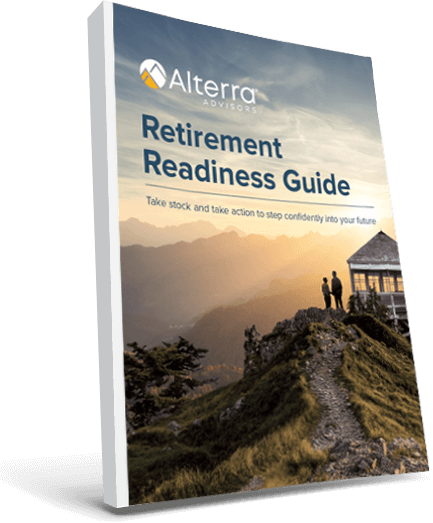For businesses with multiple owners, proper succession planning is key. For most, selling your stake and sailing off into retirement is the most likely outcome. While this is the dream, a complete plan must also account for the unexpected death or disability of an owner. This part of the plan is called a funded buy-sell agreement and should have two components:
- An executed Buy-Sell Agreement
- A plan to fund the Buy-Sell Agreement
Once in place, a funded buy-sell agreement ensures that the business can continue forward by purchasing the affected owner’s share from the surviving family.
What is a Buy-Sell Agreement?
A buy-sell agreement is a contract that requires a partner’s shares to be sold to the company or remaining partners at a price set by a predetermined formula or valuation in case of death, disability, or retirement. The valuation method to be used should be explicitly stated in the contract.
By default, a deceased or disabled partner’s shares pass to their family who may not have interest or expertise needed to run the business. These agreements create a smooth business succession by ensuring that remaining partners retain ownership and the former owner’s family is compensated.
Two kinds of Buy-Sell Agreements
The two forms of Buy-Sell Agreements are:
- Cross-purchase agreements – remaining owners purchase the shares equally, usually suitable for businesses with few partners
- Entity-purchase or redemption agreements –the business buys the shares, usually suitable for businesses with many partners
Funding the Buy-Sell Agreement
The buy-sell agreement itself is simply an obligation to purchase shares, so proper funding for the purchase is equally important. The business may opt to fund the buyout from savings or cash flow – also called a “sinking fund” – but this can cause an undue drain on cash flow or assets.
The most common funding strategies utilize life and disability insurance because it allows a business to transfer this risk to an insurance company in exchange for a predictable stream of premium payments.
- Disability buyout insurance pays a lump sum to purchase a partner’s shares if disabled and not expected to recover. The length of disability required to qualify can vary based on the agreement and policy design.
- Life insurance similarly pays a lump sum to purchase a partner’s shares at death. In some cases, this can be combined with a retirement buyout plan by using life insurance strategies that also build cash value. The death benefit pays if an owner dies or the cash value can be used to purchase a retiring owner’s shares.
Cross-Purchase or Entity-Purchase – which is right for me?
In general, the best type of agreement comes down to the number of partners.
- If your business has two or three partners, consider a cross-purchase agreement.
- Each owner purchases insurance on the other owners.
- At death or disability, benefits are paid to each remaining owner, who uses the funds to purchase the former owner’s share.
- A two-partner business only requires two policies.
- In a business with more than two partners, this structure requires more policies because each partner purchases coverage on the others. A three-partner business, for example, requires six policies.
- In this arrangement, each owner receives a step up in their cost basis because they purchase shares directly, which can help reduce taxes at sale.
- If your business has four or more partners, consider an entity-purchase agreement.
- The business purchases coverage on each partner.
- At death or disability, insurance benefits are paid directly to the business and the company purchases shares from the former partner’s estate.
- While remaining owners do not receive a step up in cost basis in this structure, it’s far simpler and more streamlined.
- A four-partner firm only requires four policies in this structure, whereas the same company would require 12 policies in a cross-purchase arrangement.
- An entity-purchase agreement is also most effective if using this not only to protect in case of death, but also to fund a supplemental retirement plan or owner buyout at retirement.
Case Studies
A cross-purchase agreement for a two-owner dental practice
Jennifer is buying into John’s dental practice. John is 10 years away from retirement and was beginning his succession plan for his medical practice. John offers to sell 50% of the practice to Jennifer now and allow her to purchase the remaining 50% of the business in 5 years.
Jennifer and John enter into a Cross Purchase Buy-Sell Agreement that stipulates the following:
- Jennifer has the right to purchase John’s share if he dies or is disabled and vice versa.
- It sets an initial value and a formula for how and when the value is reset.
- They each purchase disability buyout insurance on the other to protect against risk of disability.
- They each purchase life insurance to protect against risk of death.
The life insurance can be structured in a variety of ways depending on goals of the business. Here are two examples.
- Term life insurance coverage protects the pure risk of a partner’s death with the least cash flow commitment.
- Properly designed permanent life insurance protects in the case of death, but also builds tax-sheltered cash value that Jennifer could use to buy the remaining 50% share and send John into retirement with a tax-free retirement supplement.
An entity-purchase agreement for a 10-partner law firm
A law firm with 10 partners wants to ensure that the business can continue forward if a partner dies or becomes disabled. The firm has very strong cash flow and wants to provide added retirement benefits beyond the 401(k) plan for exiting partners.
The firm establishes an Entity Purchase Buy-Sell agreement, which stipulates the following:
- The firm buys shares back from a deceased or disabled partner’s family.
- A formula for valuation.
- The firm purchases life and disability insurance policies on each partner to provide the cash needed for buyout.
They settle on the following life insurance structure:
- The firm purchases a permanent life insurance policy on each partner.
- The policies are carefully designed to cover risk of death and build cash value.
- If a partner dies, the policies pay a death benefit to the firm, which is used to purchase the deceased partner’s shares.
- If a partner retires, ownership of the policy and cash value is transferred to the partner and can now be personally used to fund retirement, estate planning, charitable giving, or a variety of other planning applications.
The firm could also have chosen to pay a lump sum or income stream from the cash value to a retiring partner but keep ownership of the policies. This has two benefits.
- Partners still receive an additional retirement benefit.
- The firm receives insurance proceeds when the retired partner eventually dies.
- This creates a way to fund future contributions for new partners or build an asset on the firm’s balance sheet.
Selecting the right Buy-Sell Agreement and insurance structure should be part of an owner’s comprehensive financial planning. By starting with the big picture, you’re often able to meet more than one goal with a single strategy!
The “Alterra” name was coined by joining the Latin roots “alter”, the origin of the word “altruism” with “terra” meaning earth or land. This name reflects the company philosophy of “clients before profits” and providing firmly grounded advice.


